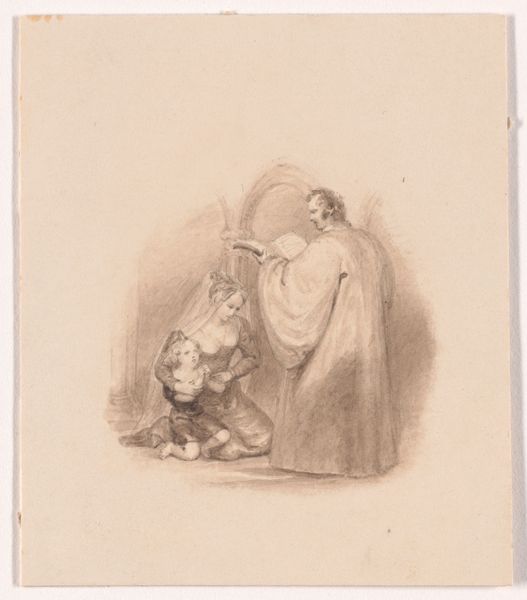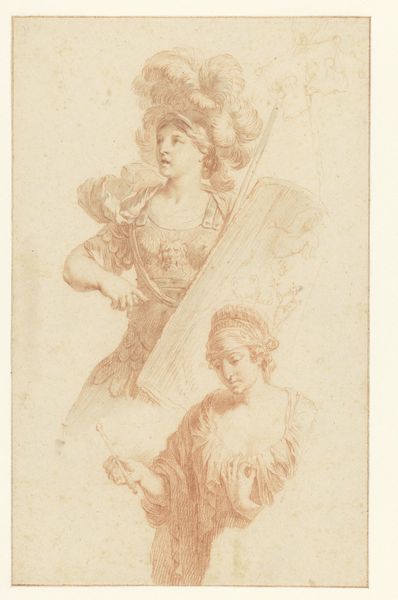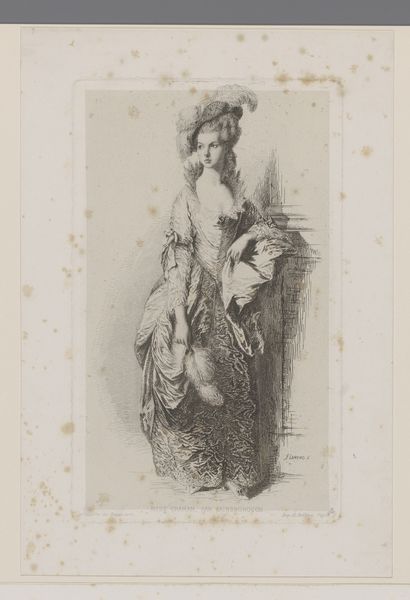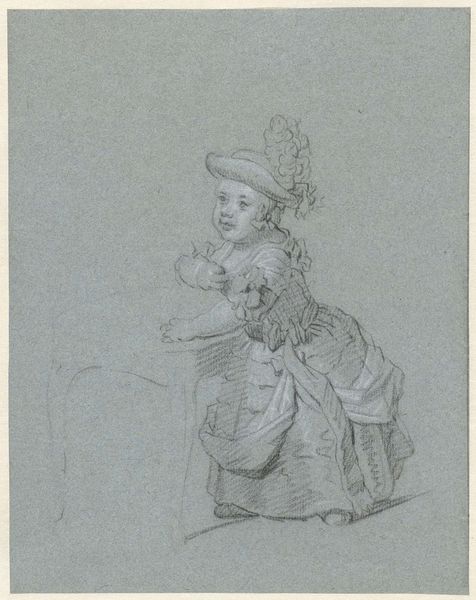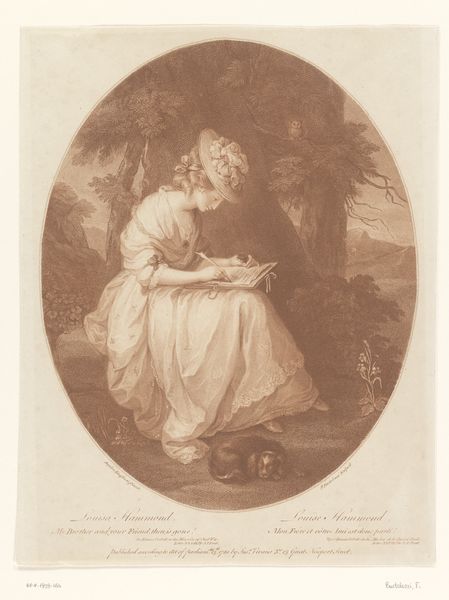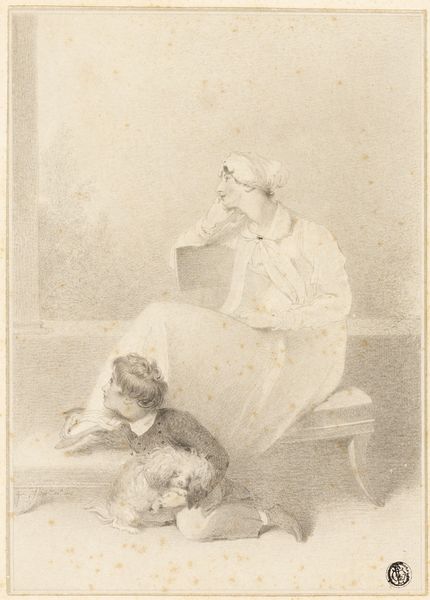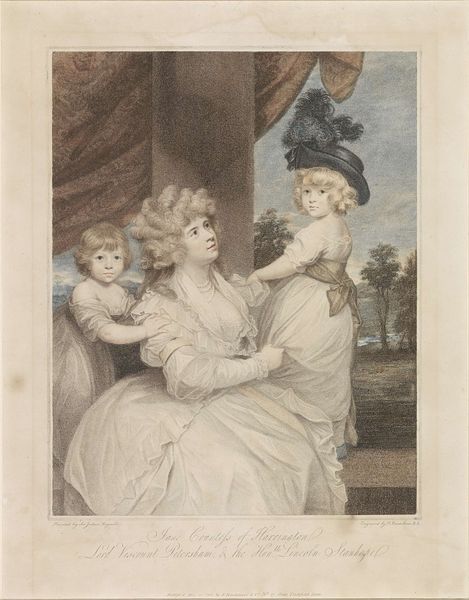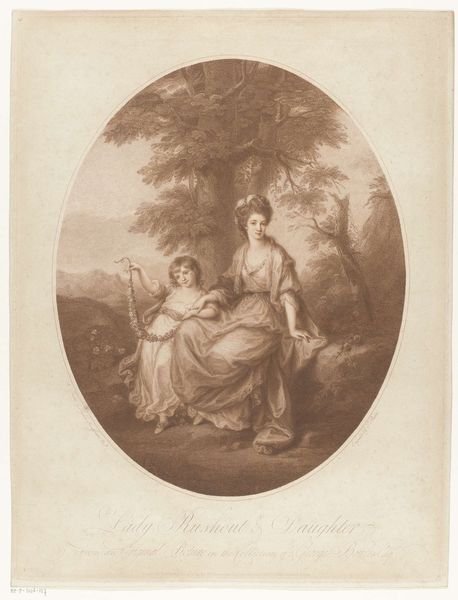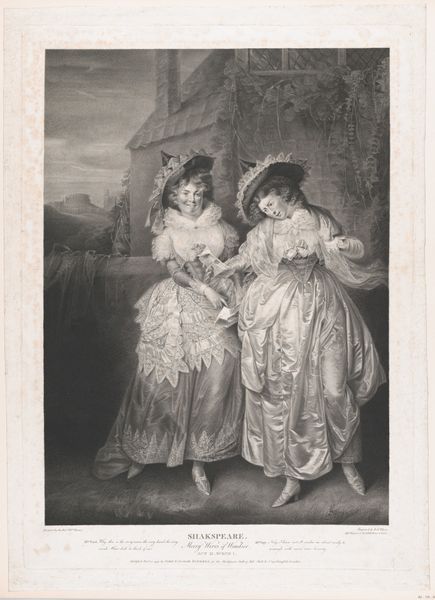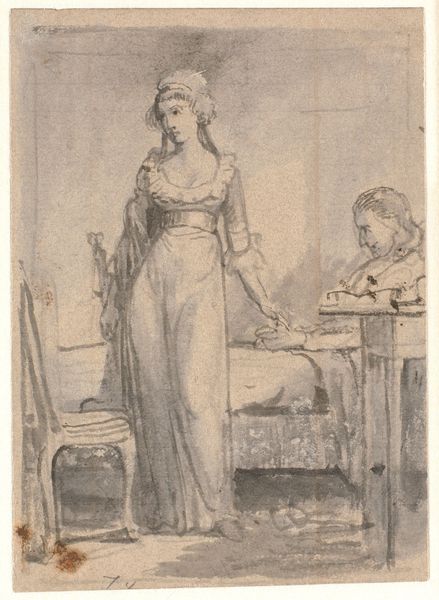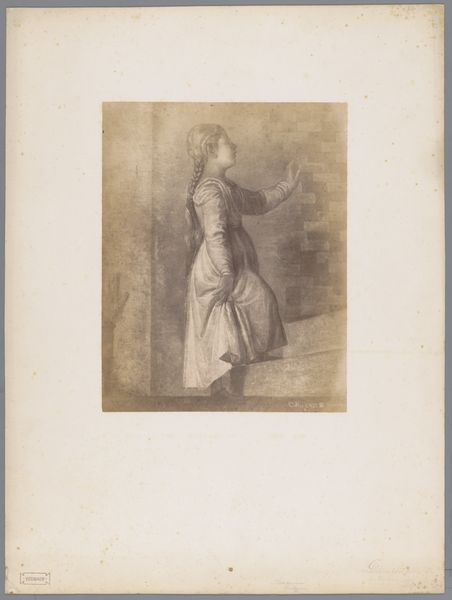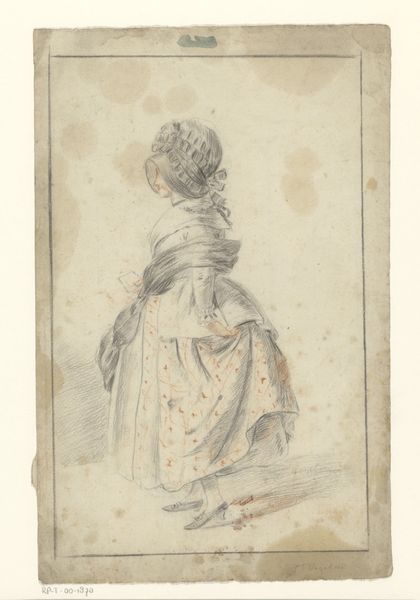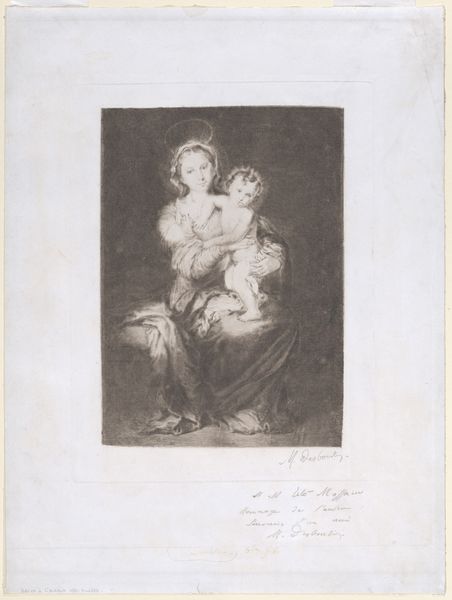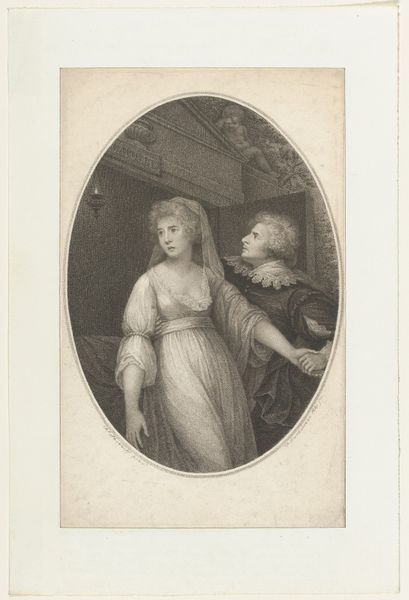
drawing, print, etching, engraving
#
portrait
#
drawing
#
neoclacissism
# print
#
etching
#
pencil sketch
#
child
#
romanticism
#
history-painting
#
engraving
Dimensions: Sheet: 10 5/8 × 8 13/16 in. (27 × 22.4 cm)
Copyright: Public Domain
Curator: Here we have "Expectation" from around 1800, attributed to William Nelson Gardiner, presently housed at The Met. What’s your initial impression? Editor: It's delicate. The monochrome palette of this drawing emphasizes line and form, a rather interesting counterpoint to the quite palpable tension and... anticipation. It is very Romantic, but rendered with clean, classical lines. Curator: Yes, you’ve hit on something key: its stylistic duality. Gardiner, who was an engraver, skillfully works with etching techniques, giving a sense of airy elegance while subtly navigating Neoclassical ideals within a rapidly transforming cultural moment toward Romanticism. Look closely at how the print process captures the texture of fabric. Editor: Exactly! Notice the texture achieved solely through lines, it tells us so much about the gown's material quality and the socio-economic context. I am curious about how it relates to other printed material being consumed by the popular public and the potential class implications of such images. It certainly wouldn’t have been a piece for a mass audience, I'm guessing. Curator: Indeed. Given its production via etching and engraving, coupled with the era’s art market dynamics, its consumption likely would have been among a cultivated, privileged demographic capable of appreciating—and, frankly, affording—such works. There's a strong argument here that material scarcity directly determines social perception. What narrative do you interpret in its rendering? Editor: The title clearly steers our gaze. The woman's raised hand and hopeful expression—reinforced by the child at her side—speaks of yearning. Her physical positioning even hints at social position. It’s about hope but also social expectation. Perhaps familial duty mixed with hope for economic or social advancement through the arrival of someone, or something... it is all deeply ingrained within British society, particularly given its social codes during the early 1800s. Curator: Very perceptive. To your point, by examining the artistic output and its reception, we gain crucial insight into social values and belief systems operating then. A delicate etching, indeed. Editor: Right, a reminder that art objects aren’t simply aesthetic—they're embedded within broader systems of production, dissemination, and power. Curator: And these historical materials help inform our present ones too. Thanks for shedding light on this moment, this history. Editor: Of course. I'll keep an eye out!
Comments
No comments
Be the first to comment and join the conversation on the ultimate creative platform.
